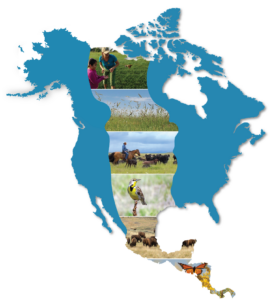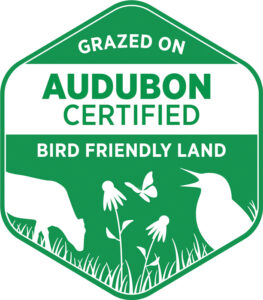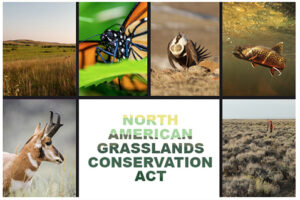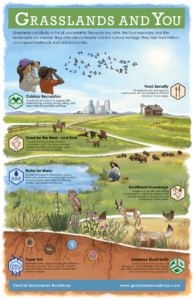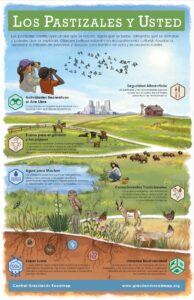Birds are disappearing along with grasslands. Scientists estimate we have lost approximately 3 billion birds since 1970, and ¼ of them were grasslands species. These declines are a warning that action is needed to ensure grasslands are here for future generations. The good news is that large, intact grassland landscapes remain! There is no time to lose in their conservation for today and future generations. This is why Bird Conservancy of the Rockies, along with hundreds of other organizations, are working together to develop a comprehensive Central Grasslands Roadmap to save our grasslands.
Contact: Maggie Hanna
Central Grasslands Roadmap Director
[email protected]
https://www.grasslandsroadmap.org/
Grasslands contribute to the air we breathe, the water we drink, the foods we enjoy, and landscapes we love to explore. They offer natural beauty and rich cultural heritage, even as they feed millions and support the livelihoods of rural communities. They help purify our world by capturing water and carbon in the soil and deep underground, mitigating undesirable events like climate change, wildfire and severe drought.
Grasslands remind us of our western way of life and ancestral ties that go back generations and even millennia. This is a landscape with a rich history that is vital to sustaining wildlife and human communities. Unfortunately, North America’s grasslands are shrinking from a variety of causes encroaching from all directions. These include residential development, shrub and tree encroachment, row-crop conversion, energy development, climate change and economic shifts happening in rural communities.
Getting to Know Grasslands
Read on to learn more about the benefits that grassland provide. We invite you to spread the word to your friends and family as we recruit more champions for grasslands!
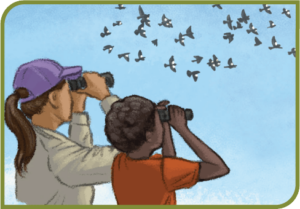
Outdoor recreation and hunting paradise
Grasslands are beautiful places to explore and enjoy, from hiking to hunting. Grassland wetlands attract thousands of ducks, geese and a variety of songbirds and shorebirds during nesting and migration, providing local birdwatching, nature tourism, fishing and hunting opportunities.
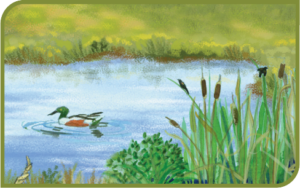
Water for drinking, agriculture and wildlife
Healthy, intact grasslands support watersheds, playas and rivers and streams, which also recharge aquifers. Grasslands and wetlands take toxins out of the water like fertilizers and pesticides and protect our groundwater. This ensures safe drinking water for agricultural and recreational use as well as drinking water for people and downstream communities.
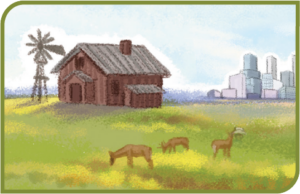
Healthy, sustainable food sources
Grasslands ensure the livelihoods of ranchers, producers and agrarian communities, which are the backbone of our food supply. The U.S. loses more than 1 million acres of grassland each year, which hurts ranching families in addition to wildlife. Ranching and agricultural production are declining due to economic and environmental conditions that threaten these livelihoods. Their success—and food on our dinner plates—depend on thriving, productive grasslands.
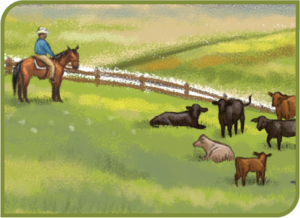
What’s good for the herd is good for the birds
Beef gets a bad name in the news these days, but cattle ranching is actual vital to healthy grasslands. Here’s why: Grasslands need large grazing ruminants, like cattle and bison, to thrive. Cattle grazing fulfils that ecological function and is highly compatible with healthy grasslands, providing and improving habitat for many species of birds and other wildlife. Ranching is where the environment, economics and cultural heritage connect—by bolstering climate resiliency, providing jobs in rural communities, and ensuring a way of life led by those who live and work the land can continue for generations to come.
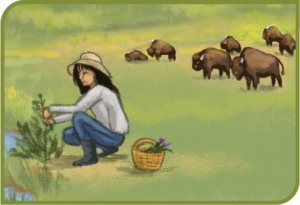
Traditional knowledge
Grasslands are home to the traditional ecological knowledge of many Indigenous/First Nations peoples. Tatanka (bison, in the Sioux-Lakota language) returning to the grasslands after a long absence are an example of how some communities are finding connection by restoring traditions that provide benefits for grasslands and Indigenous communities
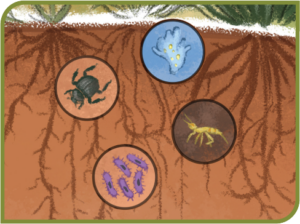
Super soil
Grasslands are effective at carbon sequestration, reducing CO2 emissions that contribute to climate change. This reduces the frequency of severe weather events and extreme temperature variations that are linked to a changing climate. Healthy grasslands support community resilience to cope with the effects of climate change, such as flood, drought, and wildfires.
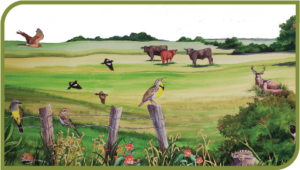
Amazing biodiversity
Grassland landscapes are home to an incredible number of plants and animals. Brilliant choruses of morning birdsong bring this to vivid life. Grasslands depend on animal actions to stay healthy—such as grazing by cattle, bison, pronghorn, and prairie dogs. Birds and insect pollinators disperse seeds and pollen, which also helps make products we enjoy like honey.
How to help
Make your voice heard as a consumer: Buy Audubon-Certified Bird Friendly beef! Audubon’s Conservation Ranching program works with producers to raise beef in a sustainable way that also benefits wildlife habitat. Ask your local grocer to include it in their product line, if they don’t already. You can even mail-order product from retailers—check out Audubon’s online guide.
Learn more about the North American Grasslands Conservation Act (NAGCA). This proposed U.S. legislation would establish a grant program to provide landowners with voluntary economic incentives to conserve and restore our disappearing grasslands. If you like what you see and agree this is important, we hope you will show your support and let your elected representatives know how you feel! Follow #ActForGrasslands on social media for the latest news and updates.
English version or Spanish version
Download this “Grasslands & You” poster that can be printed at home and shared with others!



